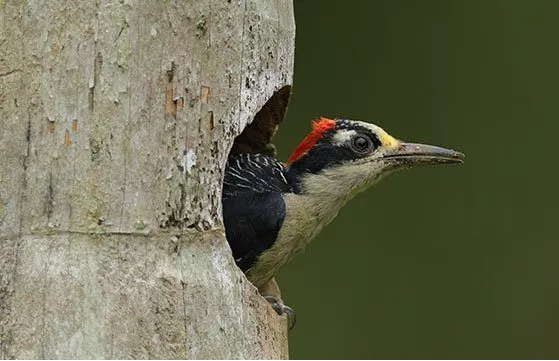Like other birds, woodpeckers have distinctive characteristics. Among these, their pecking behaviour is undoubtedly one.
Ever wonder why woodpeckers make their pecking sounds?
Initially, it appeared to me that they were self-mutilating by slamming their faces against a tree as forcefully as they could. But I was mistaken. Initially, it appeared to me that they were self-mutilating by slamming their faces against a tree as forcefully as they could. But I was mistaken.
These six factors explain why woodpeckers peck at wood.

To locate food, woodpeckers peck at wood.
Woodpeckers use pecking to communicate.
Woodpeckers use pecking to construct their nests.
That’s why woodpeckers peck—they can.
Woodpeckers use pecking to indicate their territory.
Their pecking destroys residential and commercial buildings in addition to harming trees.
They begin to peck to get at any insects they notice inside of wood, be it larvae, ants, or other insects.It’s interesting to note that they use their extraordinarily long tongue to collect those insects once they make an incision in a tree’s bark.
Rather than tweeting, they tap the branches with their drums. That sound also aids in their ability to attract partners. It’s interesting to note that sound aids in deterring potential attackers and competitors. They can peck ten thousand times in a day. Woodpeckers rely on their capacity to carve; they have a powerful neck and beak. Fun Fact: A woodpecker is more likely to be looking for food in an area if they make several small holes in a wooden building. To alert other birds that they are in the area, woodpeckers beat loudly on the wood.






